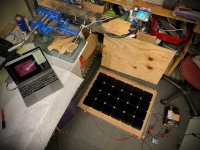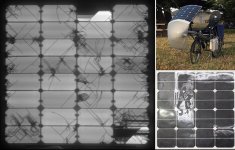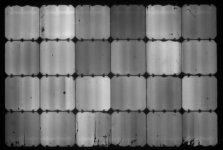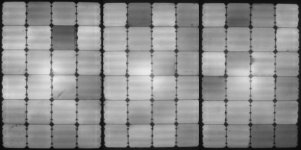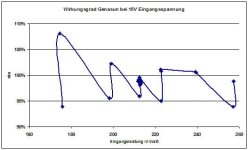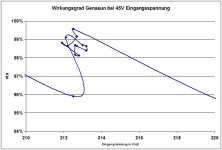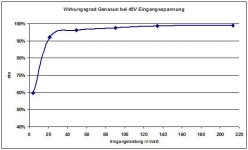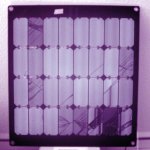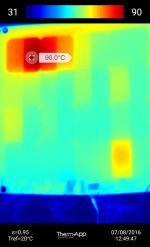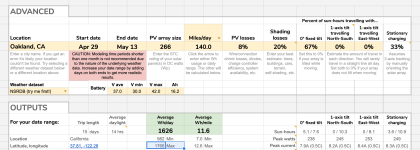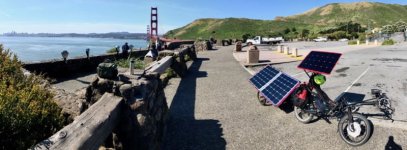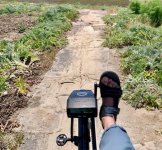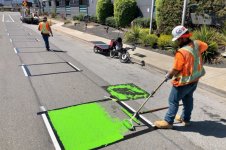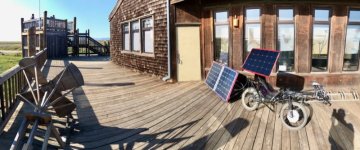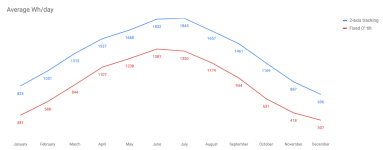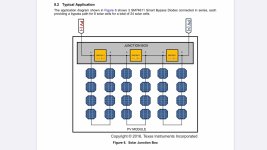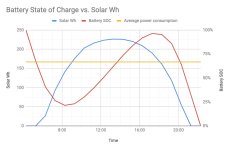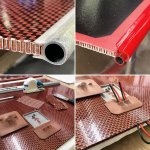solarEbike said:
Add the solar panels last.
Yes. You may find that it would be a waste of time, effort, and money, to have them on the bike/trike, depending on your use case and the panels in question. Or just plain cost too much for the result.
In my case, I managed to get four low-power panels for a little more than $30 at a thrift store; at the price I decided to get them anyway despite knowing they probably wouldn't really work the way I wanted.
https://endless-sphere.com/forums/viewtopic.php?f=41&t=106119
The three identical panels hooked in series directly connected to the battery, at a little more than half-charged, only nets about half an amp of current at noon on a very sunny day in Phoenix, AZ, panels pointed as close to perpendicular to the sun as possible while laying on top of the trike's canopy. They're not very good panels, mind you....
In my case, the 31 pounds of panels themselves would, at best, net me another couple of Ah, maybe three, in dawn-to-dusk riding (which I don't do). The 38lb (IIRC) pack they're charging provides about 40Ah, so it would be better in my case to add another identical pack (if there was room), based on weight vs capacity, especially since a fair bit of my riding is at night, or at times when the sun would be so far from overhead as to not give significant power output. And the ride segments are usually so short that the only benefit would be while it's parked out in the sun while at the destination.
On a much lighter trike than SB Cruiser, with lower power usage, that doesnt' have a big battery or room for one, it might be worth it, for long rides in the sun.
Now, if I had one good panel the size of the top of the trike (roughly eight feet long by just under three feet wide ), that could produce 200-300w, at something like 60v (or just under) open-circuit (ideally 58v so it could literally never overcharge), I could direct-connect the panel to the battery and just leave it that way, and it would just get any energy available, whenever there was any, and it might be worth carrying around, at around 4A or so charge current.
I poked around a teeny bit, and found nothing at that voltage for that wattage of panel, but I did find several in that wattage range that would physically fit in the space available, and weigh around 40lbs (so no more than the four I have now, but much better efficiency). The closest stuff I found was about 40v-45v....
To really be worth it it'd need to be about 1000w panel (which is impossible) in that size, to practically power the trike during daylight rides.



